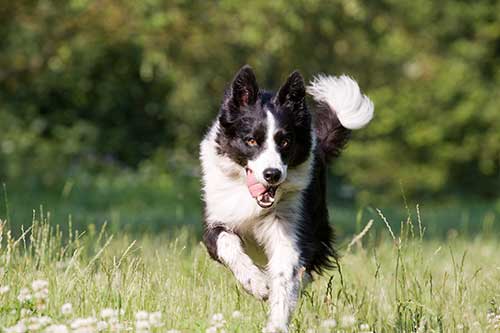4 Useful Tips to Having a Happy and Healthy Puppy
Jul 01, 2019

As new dog owners, it can be confusing to know what to do to help your puppy be its happiest and healthiest. Follow these 4 useful tips to help get your puppy on the right track to a happy life.
1. Provide clean and fresh water daily.
Just like us, our pets prefer to have clean drinking water, so its important to change it out daily. Having a water bowl set out in a special place can also help to prevent your puppy from going other places to get water.
2. Feed on a regular schedule.
As “pet parents” your schedule may differ from day to day, but its important that
you feed your puppy on a regular schedule. Your puppy should start eating solid food around 4 weeks of age. Puppies should be fed three to four times a day because smaller meals are easier for them to digest and their energy levels don’t peak and fall so much with frequent meals. Also, don’t start the bad habit of feeding them table scraps.
3. Take your puppy to bathroom after they finish eating.
Generally speaking, a puppy can control their bladder one hour for every month of age. By taking your pup to the bathroom after they finish eating, you can avoid accidents in the house, as well as help train them on when and where to take care of their business.
4. Know that puppy nutritional needs are different from adult dogs.
It is important as a dog owner to know the types of foods that are acceptable for your dog at different stages of their life. SPORTMiX Puppy Small Bites is a nutrient-rich formula with chicken and fish protein, combined with a high level of vitamins and minerals, to promote development of bones, teeth and muscles during this rapid stage of growth. Balanced Omega-6 and Omega-3 fatty acids promote healthy skin and a beautiful coat. As puppies, it’s important that they begin on a food that’s formulated for their first full year of growth --- exactly what SPORTMiX provides.
Head to your local Co-op now for SPORTMiX and all your puppy care needs!
1. Provide clean and fresh water daily.
Just like us, our pets prefer to have clean drinking water, so its important to change it out daily. Having a water bowl set out in a special place can also help to prevent your puppy from going other places to get water.
2. Feed on a regular schedule.
As “pet parents” your schedule may differ from day to day, but its important that
you feed your puppy on a regular schedule. Your puppy should start eating solid food around 4 weeks of age. Puppies should be fed three to four times a day because smaller meals are easier for them to digest and their energy levels don’t peak and fall so much with frequent meals. Also, don’t start the bad habit of feeding them table scraps.
3. Take your puppy to bathroom after they finish eating.
Generally speaking, a puppy can control their bladder one hour for every month of age. By taking your pup to the bathroom after they finish eating, you can avoid accidents in the house, as well as help train them on when and where to take care of their business.
4. Know that puppy nutritional needs are different from adult dogs.
It is important as a dog owner to know the types of foods that are acceptable for your dog at different stages of their life. SPORTMiX Puppy Small Bites is a nutrient-rich formula with chicken and fish protein, combined with a high level of vitamins and minerals, to promote development of bones, teeth and muscles during this rapid stage of growth. Balanced Omega-6 and Omega-3 fatty acids promote healthy skin and a beautiful coat. As puppies, it’s important that they begin on a food that’s formulated for their first full year of growth --- exactly what SPORTMiX provides.
Head to your local Co-op now for SPORTMiX and all your puppy care needs!